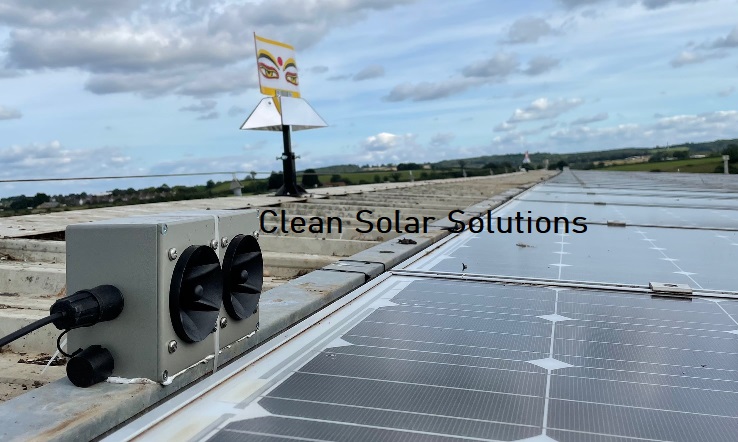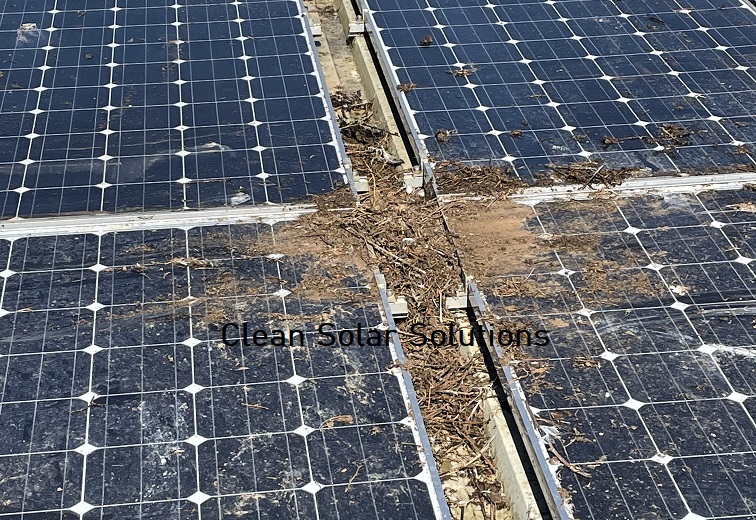The COVID pandemic has touched our planet in innumerable ways. Here, we discuss how COVID created a further, unexpected plague across rooftop solar arrays. We examine the effect of nesting gulls on solar panels and how they can be deterred from visiting a roof.

The Effect of Nesting Gulls On Solar Panels Explained
The plague that has struck rooftop solar, is gulls. Lots of gulls, specifically two types, the herring gull and lesser-black backed gull. How has this happened and what is the effect of nesting gulls on solar panels?
Gulls usually breed together for life and usually nest in the same area. They have an exceptionally low infant mortality rate of less than 5%. They turn virtually every single hatched egg into a flying bird. This is important to recognise. Once gulls appear on a roof, they will not disappear of their own volition. A gull population on a building can increase 3-fold in one year.
COVID meant swathes of commercial and industrial buildings across the UK closed. These buildings were already ripe for gull nesting, but activities of the buildings and the randomness of people coming and going deterred the birds from setting up camp. With the absence of random human activity, the birds were left to go for it.
The result is an uplift in gull population due to nests and eggs not being removed during the incubation period. Natural England simply were not issuing licences for this type of work for a considerable amount of time.
Can You Sort The Effects of Gull Nesting On Solar Panels Issue Yourselves?
No. Herring gulls have been a protected species in the UK since 2010. What’s more, they have been on the RSPB Red List of threatened bird species since 2009, giving them the highest level of conservation status!
Gull numbers are controlled to a degree by companies who carry out egg and nest removal. This plays a huge part in controlling gull numbers because they usually lay a clutch of between 2-4 eggs, usually 3 and are extremely good and turning all hatched eggs into flying birds. They have an annual mortality rate of less than 5%, so this explains the proliferation of gulls across our isles this last 2 years.
Clean Solar Solutions are legally able to remove pigeon nests and eggs from under panels and will shortly have the specialist licence needed for gulls too.
Health Risks From Nesting Gulls
Gull droppings present numerous risks to human health. These include:
- Salmonella
- Psittacosis
- E-Coli
- Histoplasmosis
- Cryptococcosis
How can these infect people inside a building when the droppings are on the roof? A good many of these diseases are from airborne spores and these can find their way into a building via air ducting units and water contamination.
With an increase in gull population on roofs, the risk to human health also increases. This is particularly the case for solar O&M personnel who visit roofs as part of their job role to carry out visual checks, tests, cleaning of panels and also people tasked with the cleaning out of gutters on buildings.
The smell of ammonia can be strong upon accessing a roof and the health risks associated with this are increased when the bird droppings are disturbed by people stepping on them, or when cleaning the solar panels or guttering.
A BBC news article from 2021 shows how pigeon droppings caused the death of a boy by getting into the drainage and water system at Glasgow’s flagship hospital. It would have happened because people underestimate the effect bird droppings can have.
Fire Risks From Nesting Gulls
These pictures show some of the issues from nesting gulls:
Broken panels from gulls droppings tones, molluscs and metal objects from height onto panels

Cable damage
Hotspotting from bird droppings and nests covering panels in whole or in part

What Does This Mean For Solar Budgets?
Budgets suffer a double hit from nesting gulls. Your output and revenue will drop from damage and hotspots and your O&M costs for cleaning and bird deterrent installation for that year will increase. If you lease the roof and own the solar panels, the building owner may even charge you for additional gutter cleans on top of their normal spend.

Gulls will devastate your system without doubt. You must be proactive and money must be spent. The situation will not rectify itself, but will continue to deteriorate with each nesting season.

What Is The Solution For Nesting Gulls On Solar Panels?
An intense and robust bird deterrent system must be put in place. Multiple deterrents should be used, not just one. Harris Hawks, rubber owls and speaker systems playing distress cries from other gulls or birds of prey are not the answer. The gulls are way too smart and aggressive for any of those to be a deterrent. They will perch on a speaker playing distress cries of other gulls because they know it’s a recording. As soon as Harris Hawks leave site, the gulls return, that’s if they haven’t already attacked the hawk itself!
Scaring Birds Ltd provide sonic, ultrasonic and wind-driven bird deterrent systems and if gulls are present, you need a combination of audible and visual deterrents in order to scare the birds away.
For more information about our bird deterrents or deterrent fitting or cleaning services, please contact us.
